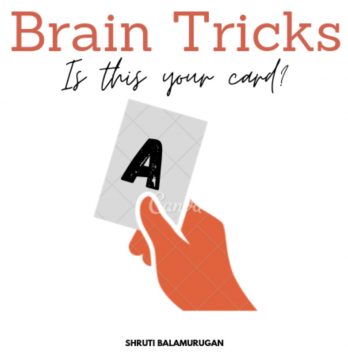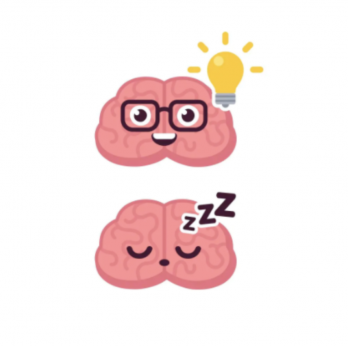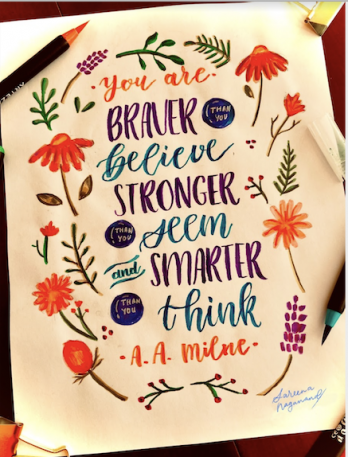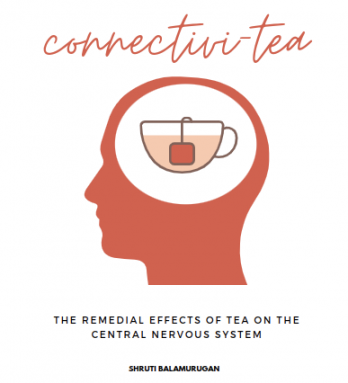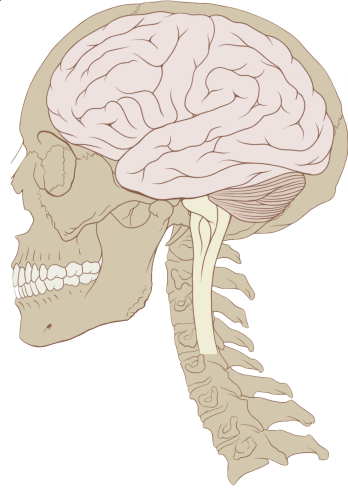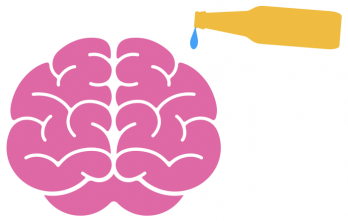Comas are consciousness disorders. Comas can be caused by a stroke, brain tumour, drug/alcohol overdose, oxygen deficiency, exposure to chemicals, a severe head injury, or even an underlying disorder such as an infection.
[…]I pride myself on being a person with common sense. I pride myself on not being an idiot most of the time. I like that I’m rational and usually logical. You probably are too! You and I hold a plethora of information about how the world works in our brains, likely more than any species has ever had before. Humans have built cars and buildings, created language, harnessed electricity, seen atoms, and figured out how they work. What a race the humans are! What triumphs of rationality and intelligence!
[…]How does the brain know when we should sleep? Well, our brain helps regulate our sleeping schedule through our circadian rhythm. Our circadian rhythm can be defined as the brain’s system of determining when our body needs to sleep or stay awake based on environmental factors, like whether it is sunny or dark outside. According to the National Sleep Foundation, different ages require varied amounts of sleep to stay healthy. Children ages 6-13 require 9-11 hours of sleep, teens ages 14-17 need 8-10 hours of sleep, and adults ages 18-64 require 7-9 hours of sleep.
[…]Killing an approximate 122,019 people in 2018 in the United States alone, Alzheimer’s disease
is fatal and the sixth leading cause of death in the United States. It is the only illness on the list
that cannot be prevented, cured, or even slowed. In fact, a person diagnosed with the severe form
of senile dementia is estimated to live for an estimated three to eleven years. While the disease
does not actually kill a person, the abnormal protein deposits destroy a person’s brain cells,
which subsequently lead to fatal complications, such as the formation of blood clots, or not
being able to swallow. When a person is diagnosed with Alzheimer’s, it is truly heartbreaking;
while they suffer the complications, they also lose their sense of self. The disease claims their
precious memories, which makes the situation all the more devastating for the family. However,
a recent study conducted by the biopharmaceutical company Alzheon has alleged that we should
not give up hope on a potential cure for the gut-wrenching disease.
The following blog is a winner of the Brainy Blog Competition.
Ever since mankind has learned how to write, it has become a fundamental part of our history — manifesting into an intricate art, in some cases. We see this in historic empires, namely the Islamic Empire, where Arabic handwriting branched into a unique form of Arabic calligraphy and has since been used to spread religious messages. Similarly, calligraphy and brush lettering have been prevalent in Japan and China since the medieval ages. As we approach the modern era, we’ve seen more distinct forms of calligraphy and hand-lettering, such as the classic ‘old English letters’. Personally, hand-lettering has played a major role in my life; it has served as a hobby and a source of therapy. I find the greatest pleasure in bringing ordinary words to life with different strokes and embellishments — as displayed in the image above. Similarly, I am often guilty of redefining my calligraphy style in school notebooks and worksheets.
However, recent observations have proven that practicing hand-lettering has the ability to improve brain function. Specifically, handwriting — and thus hand-lettering — increases language processing skills. The ability to process language is controlled by multiple areas of the brain. For instance, the Broca’s area — located in the frontal lobe of the brain — is linked to speech production and language comprehension. Further, the Wernicke’s area — located in the cerebral cortex — is involved in understanding written and spoken language. In fact, according to a study performed at the Indiana University, the action of writing by hand increases neural activity in these areas of the brain — much like meditation (as shown by high-tech resonance imaging). It also unleashes creativity not easily accessed in any other way.
The reasoning behind these results is substantial. When a person practices handwriting (as supposed to typing), they are taking the time to absorb — and process — what is being written. It is a slower process, and hence a more beneficial one. Handwriting is a complex task that involves multiple visual perception skills such as eye-hand coordination (the ability to coordinate eye movement with hand movement), visual discrimination (the ability to classify objects or shapes based on visual information) and position in space or spatial relationships (the ability to process information about oneself in relation with their environment in space, orientation, and position). Put in more simpler terms, while handwriting requires us to transfer our thoughts on paper, it also requires us to analyze other factors like size, propritions, and spacing; the intertwinement of these two distinct processes is what enhances mental cognition.
Even though these studies are predominantly centered around day to day handwriting, the same findings can be applied to hand-lettering and calligraphy, as well. When creating a hand lettered piece, the same visual perception and planning skills are employed. In the process of transferring a phrase on paper, the artist is forced to consider artistic elements — such as format, fonts, and stroke size. Because more time and effort is utilized in forming calligraphy letters, the resulting phrase is absorbed and processed better; compared to normal handwriting, hand-lettering increases neural activity further. Whenever I need to remember something important, such as a quote, I turn to my brush pens and “calli-grafy” it — doing that seems to store the phrase in my brain for a very long time!
In summary, hand-lettering is an increasingly popular art that has taken numerous forms throughout time. However, this intricate and historic art is sometimes overshadowed by the prospect of typing — which has made transferring thoughts on paper effortless. Nonetheless, hand-lettering has proven to have significant value; while being a form of art and relaxation, it also increases neural activity, improves language processing, and enhances visual perception skills. I have full confidence that as time progresses, hand-lettering and calligraphy will continue to be treasured.
The following blog is a winner of the Brainy Blog Competition.
In Santos, Brazil, coffee is referred to as Humanities Favorite Drink. To many people, that sounds very plausible, however, it is not the truth. In actuality, the world’s favorite drink- excluding water- is not coffee, as the children of Brazil learn at an early age. it’s not Coca-Cola- which many American kids hear in childhood. it’s not even alcohol, which can hook drinkers for life through addiction. it’s tea.
Surprised? I sure was. From earl grey to chamomile to chai, tea has been around since 2700 B.C., predating coffee by about 3000 years. There are many reasons as to why tea has remained favorable for a great amount of time. For many, the reason is that tea is rooted in their culture. As for others, it’s a specific taste that coffee cannot provide. For most, though, tea is most popular due to its medicinal values. The drink is brimming with antioxidants, flavonoids, and other biologically active substances, such as polyphenol, theaflavins, caffeine, and theanine, which gives tea its astringent and fresh taste. However, that is not the only purpose of those substances. Teas are also known to have effects on neurological function, and, as emerging studies show, neuroprotective effects that decrease the risk of getting neurodegenerative diseases such as Parkinson’s, Alzheimer’s, and general cognitive decline.
A new study led by the National University of Singapore, and published in Aging, shows evidence of the rise of both functional and structural neural connectivity in correlation to drinking tea. After conducting experiments with adults aged 60+ using magnetic resonance imaging (MRI) and neuropsychological testing, the researchers found that those who drank green tea, oolong tea, or black tea at least four times a week had brain regions that were interconnected in a more efficient way.
“Our results offer the first evidence of positive contribution of tea drinking to brain structure, and suggest that drinking tea regularly has a protective effect against age-related decline in brain organization,” said Dr. Feng Lei, a researcher in the Department of Psychological Medicine at NSU and the lead author of this study.
The research shows that tea opens up several pathways for the prevention of neurodegenerative diseases like the ones listed earlier. With the accelerated aging population in the world, the prevalence of neurodegenerative diseases such as Parkinson’s and Alzheimer’s are increasing over time reaching roughly 1.3 million people over the age of 65 in 2020. With this emerging research, however, there’s a chance that these diseases may be preventative for some time. In other words, there’s a chance they may be able to slow down significantly.
In this recent decade, many studies have proven that tea has neuroprotective functions. According to one Ohsaki Cohort Study, which spanned 5.7 years and involved 13,645 Japanese, over the age of 65, green tea consumption significantly reduced the risk of dementia. Another study led by Shu-Qing Chen et.al. states that large amounts of evidence have indicated that tea polyphenols (reducing agents known to protect the body against oxidative stress) play a neuroprotective role in neurodegenerative diseases through antioxidation and the regulation of signaling pathways.
Even with all this, there is so much more to tea. Theanine is a unique amino acid of tea, accounting for 1–2% (dry weight) in fresh tea leaves. Numerous studies have shown that theanine has a neuroprotective effect. For example: glutamate is the most widely available excitatory amino acid in the central nervous system and involves many important physiological functions in the brain. When in a certain concentration, any neurons exposed to the glutamate will undergo cell death, as Nozawa et.al. found. However, if those neurons were pre-treated with theanine, the probability of cell death greatly decreased. Theanine, similar to glutamate in the chemical structure, can compete for the binding site of glutamate and inhibit the death of neurons.
In conclusion, it’s clear that tea does more than keeping you relaxed. Through bioactive ingredients such as theaflavins and theanine, tea might be more beneficial than we think. Just one cup of tea can replace your morning cup of coffee, giving you that sweet caffeine jolt while protecting your immune system and your brain all in one shot. It just goes to show, there’s more connectivi-tea between tea and the brain than was ever thought of before.
Author: Shruti Balamurugan
I have heard and I’m sure you have heard that we only use 10% of our brain. The fact is that this is incorrect. This well-known myth has almost tricked people into believing that if we could harness the rest of our brain (the remaining 90%) we would suddenly be more creative, smarter…essentially the plot of the 2014 science fiction film Lucy.
Your brain is very active and by using a technique called functional magnetic resonance imaging, a person is placed inside a scanner and different parts of the brain that are activated can be shown up on a screen. Positron emission tomography can also be used for the same purpose.
This myth was mentioned in the preface of Dale Carnegie’s How to win Friends and Influence People. In addition, William James, an American psychologist and philosopher mentioned that we “are making use of only a small part of our possible mental and physical resources” in The Energies of Men in 1908.
Furthermore, our brain tissue uses 20% of the oxygen we breathe in according to Segio Della Sala (neuroscientist).
Glial cells make up nine-tenths of the cells in the brain and they are support cells. They are also known as white matter as they provide nutritional and physical help for the other 10% of cells which is the grey matter.
In 1980, John Lorber, a British paediatrician, mentioned that he had patients with hydrocephalus who had hardly any brain tissue, but could still function. This further contributed to the myth’s popularity.
Some evidence against the myth includes:
- Slight damage to the brain can have detrimental effects; there is almost no area of the brain that could be damaged without the loss of abilities
- Brain cells that are not used will degenerate so if 90% of the brain was inactive, autopsies of adult brains would show this immense degradation
- Using the single- unit recording technique, neuroscientists insert a small electrode into the brain to monitor the activity of a single cell. However, if 90% of the cells were not used then it would have been revealed to us by this technique.
- Microstructural analysis: In the single-unit recording technique, researchers insert a tiny electrode into the brain to monitor the activity of a single cell. If 90 percent of cells were unused, then this technique would have revealed that.
Although not all 86 billion neurons are firing at once in your entire brain all the time, they do exist in a constant state of resting potential, electrically charged and ready to act when needed.
Author: Christina Brown
Many people drink alcohol, but do you know what the effects of drinking alcohol are? Most moderate drinkers like alcohol as it can make them feel less stressed, more sociable and even happier. PET scans (a brain imaging technique) have even shown that alcohol releases endorphins, which trigger pain relief pathways in the brain.
Dr. Kenneth J. Mukamal (professor of medicine at Harvard Medical School) and his colleagues studied 3,376 men and women who were enrolled in the Cardiovascular Heart Study. They had MRI scans and also reported their alcohol consumption. The results showed that brain volume shrank in proportion to alcohol consumed. In fact, shrinkage was greater in moderate drinkers compared to teetotallers (non-drinkers).
Another study done in 2008 in the Archives of Neurology supported Dr. Mukamal’s results by revealing that those who drank more than 14 drinks per week over a 20-year time frame had 1.6% smaller brains than teetotallers.
Alcohol consumption causes neurotoxicity, which means that the neurons making up different pathways in the brain begin burning out. In turn, this damage results in brain shrinkage.
However, there have been more than 100 observational studies which have linked moderate drinking to a reduced risk of a heart attack, stroke, and various cardiovascular diseases. Alcohol consumption has even been associated with a lower risk of diabetes and gallstones. On the other hand, for women, moderate drinking can increase the risk of breast cancer. A drink a day can increase one’s lifetime risk of breast cancer to 8.8%.
In a recent Lancet study people who regularly drank 10 or more drinks a week had around 1 to 2 years shorter life expectancies compared to those who had less than 5 drinks a week. However this number increased to around 4 to 5 years for those who had 18 drinks or more per week.
Overtime excessive consumption can lead to anxiety, depression and an increased risk of other cancers as well as breast cancer. Wernicke-Korsakoff syndrome (WKS) is a common brain disorder that can appear due to alcohol abuse. Its symptoms include extreme confusion, amnesia and visual disturbances.
In the journal of Neurology there was a study completed in 2014 stating that men who had more than two and a half drinks a day experienced memory loss and cognitive decline up to six years earlier compared to those who did not drink, quit, or were moderate drinkers.
Alcohol can affect the body very quickly. It is absorbed through the bloodstream in the lining of the intestine and then diffuses all over your body into biological tissues. In just five minutes, alcohol enters the brain with noticeable effects occurring within 10 minutes. The liver starts absorbing the alcohol after 20 minutes. On average, 1 ounce of alcohol per hour can be metabolized by the liver. It takes about five and a half hours for a blood alcohol level of 0.08, the legal limit for drinking, to leave your system.
There are many stages of alcohol consumption. Euphoria is the first stage in which you get a release of dopamine and feel relaxed, but also experience minor impairment of your reasoning. You go through more stages depending on your alcohol level. If you reach a BAC (blood alcohol concentration) of 0.35 you could potentially go into a coma and a BAC of 0.45 may result in death due to alcohol poisoning.
Author: Christina Brown
Why do we sleep? What is the purpose of sleep? The first part of the sleep cycle is called non-REM sleep or (NREM). There are four stages to NREM sleep. The first stage comes between being awake and falling asleep. The second is light sleep in which the body temperature decreases. The third and fourth stages are deep sleep. During REM sleep, the eyes move rapidly behind closed lids, breath rate increases, and the body becomes temporarily paralyzed as we dream. Brain waves are similar to when you are awake. This cycle repeats but with each cycle you spend less time in the third and fourth stages of NREM sleep and more time in REM sleep. The cycle will repeat four or five times.
[…]Here is the transcript for the video Brainstruction: A Journey Through Brian’s Brain addressing the childhood neurological condition cerebral palsy. This video was made as part of the Brain Awareness Video Contest 2018 organized by the Society for Neuroscience. Check out the full video by clicking on the link below.

